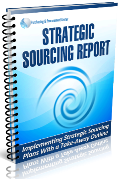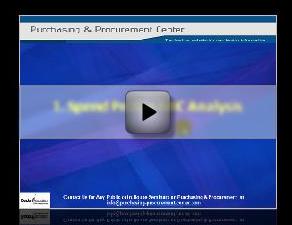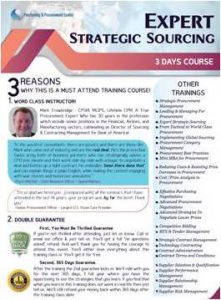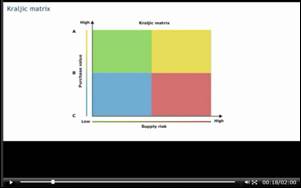Category Management and Strategic Sourcing:
Similarities,
Differences and How to Use Both!
Category Management and Strategic Sourcing are part of the same coin. By effectively managing categories of products and services and strategically sourcing suppliers, procurement executives can optimize their purchasing processes, drive cost savings, and achieve various other benefits.
In this article, we will delve into the world of category management and strategic sourcing, uncover the key principles behind them, explore their intersection, and highlight the benefits of their implementation.
Furthermore, we will also discuss the common challenges faced in this domain and provide 5 strategies for successful implementation.
Understanding Category Management!
Simply put, category management is the strategic approach to
purchasing that involves the categorization of products or services based on
their characteristics, procurement requirements, and supplier relationships.
This method allows organizations to have a comprehensive understanding of their expenditures, identify areas of spend, and effectively manage their overall purchasing strategy.
It goes beyond basic purchasing and focuses on optimizing the entire product lifecycle, from initial sourcing to supplier relationship management and ongoing performance evaluation.
5 Core Principles of Category Management!
Successful category management relies on a set of key principles that guide the decision-making process. These principles include:
1. Strategic Alignment
Category management should align with the organization's overall business strategy and objectives.
2. Data-Driven Approach
The decisions made in category management should be supported by accurate and reliable data.
3. Cross-Functional Collaboration
Effective category management requires collaboration across departments and functions within the organization.
4. Supplier Relationship Management
Building strong relationships with suppliers is essential for successful category management.
5. Continuous Improvement
Category management is an ongoing process that requires continuous monitoring, evaluation, and improvement.
Delving into Strategic Sourcing!
While category management provides the framework for
optimizing purchasing practices, strategic sourcing is a crucial component of
its implementation.
Strategic sourcing focuses on identifying, evaluating, and selecting the most suitable suppliers to meet the organization's specific needs.
Strategic sourcing goes beyond simply finding suppliers; it is a systematic approach that involves a comprehensive analysis of market trends and supplier capabilities.
By understanding the market dynamics, organizations can make informed decisions about their sourcing strategies, ensuring they align with their overall goals and objectives.
Strategic Sourcing Helps Beyond Costs!
When implementing strategic sourcing, organizations need to
consider not only the cost of goods and services but also the overall value
proposition offered by suppliers.
This includes factors such as supplier reliability, product quality, and the ability to innovate. By taking a holistic approach to supplier selection, organizations can optimize their procurement processes and drive long-term value.
Strategic Sourcing is a Continuous Activity!
Furthermore, strategic sourcing is NOT a one-time activity but an ongoing process. It requires continuous monitoring of supplier performance and market conditions to identify opportunities for improvement and cost savings.
By staying proactive and adaptive, organizations can maintain a
competitive edge in the ever-evolving business landscape.
Overall, strategic sourcing is a vital component of effective procurement practices. It enables organizations to optimize their supply chains, drive cost savings, and mitigate risks.
By taking a systematic and strategic approach to supplier selection and contract negotiation, organizations can achieve the best value for their procurement investments and position themselves for long-term success.
The Intersection of Category Management and Strategic Sourcing!
Category management and strategic sourcing are not
standalone practices but rather interrelated disciplines that complement each
other in achieving organizational goals.
While category management provides a framework for understanding and optimizing spend across different categories, strategic sourcing focuses on finding the right suppliers for each category.
Category Management
Provides a framework for understanding and optimizing spend across different categories.
Strategic Sourcing
Focuses on finding the right suppliers for each category.
How Category Management Complements Strategic Sourcing?
Category management sets the foundation for successful strategic sourcing by providing insight into the organization's spend patterns, supplier performance, and overall procurement strategy.
By categorizing
products or services, organizations can effectively prioritize their sourcing
efforts and identify savings opportunities.
The Synergy between Category Management and Strategic Sourcing!
When category management and strategic sourcing work
together harmoniously, organizations can unlock significant benefits. By
aligning their efforts, businesses can achieve cost savings, optimize supplier
relationships, improve quality and efficiency, and enhance overall
organizational performance.
3 Benefits of Implementing Category Management and Strategic Sourcing!
1. Cost Reduction and Savings
One of the key benefits of implementing category management and strategic sourcing is the potential for cost reduction and savings. By systematically analyzing spend, identifying cost drivers, and negotiating favorable supplier contracts, organizations can achieve significant savings and improve their bottom line.
2. Improved Supplier Relationships
Category management and strategic sourcing provide organizations with the opportunity to develop strong and mutually beneficial relationships with suppliers.
By strategically selecting and collaborating with suppliers, businesses can enhance communication, improve service levels, and ensure a reliable supply chain.
3. Enhanced Quality and Efficiency
By adopting category management and strategic sourcing principles, organizations can streamline their procurement processes, optimize supplier performance, and improve overall quality and efficiency. This leads to better product and service delivery, increased customer satisfaction, and a competitive advantage in the market.
Overcoming Challenges in Category Management and Strategic Sourcing!
While category management and strategic sourcing offer
considerable benefits, their implementation is not without challenges. Common
obstacles include resistance to change, lack of cross-functional collaboration,
and difficulties in obtaining accurate and reliable data.
However, these challenges can be overcome through effective communication, stakeholder engagement, and the use of technology-enabled solutions.
5 Strategies for Successful Implementation of Category Management and Strategic Sourcing!
To ensure successful implementation of category management
and strategic sourcing, organizations should consider the following strategies:
1. Executive Support
Secure buy-in and support from senior leaders to drive organizational commitment.
2. Change Management
Implement change management practices to address resistance and facilitate a smooth transition.
3. Collaborative Culture
Foster a culture of collaboration and cross-functional teamwork to maximize the effectiveness of category management and strategic sourcing.
4. Technology Adoption
Leverage technology solutions to streamline processes, improve data visibility, and enhance decision-making capabilities.
5. Metric and Performance Evaluation
Establish metrics to measure the success of category management and strategic sourcing initiatives and continuously assess performance to drive further improvements.
Conclusion
Category management and strategic sourcing are powerful tools that can drive significant benefits for organizations.
By implementing these practices, businesses can optimize their procurement strategy, drive cost savings, enhance supplier relationships, improve quality and efficiency, and ultimately gain a competitive edge in the market.
Despite the challenges, organizations that embrace category management and strategic sourcing will be better positioned to navigate the complexities of today's business environment and achieve sustainable success.











